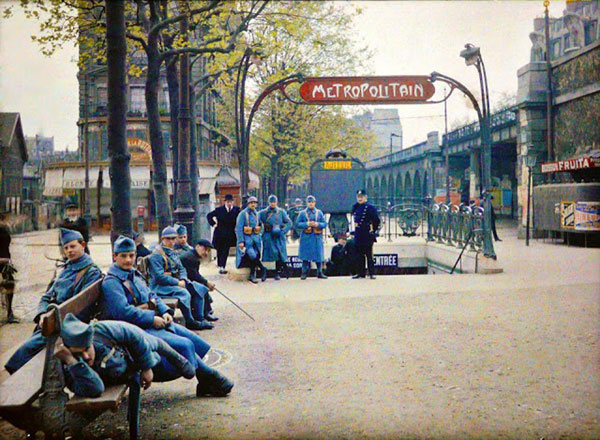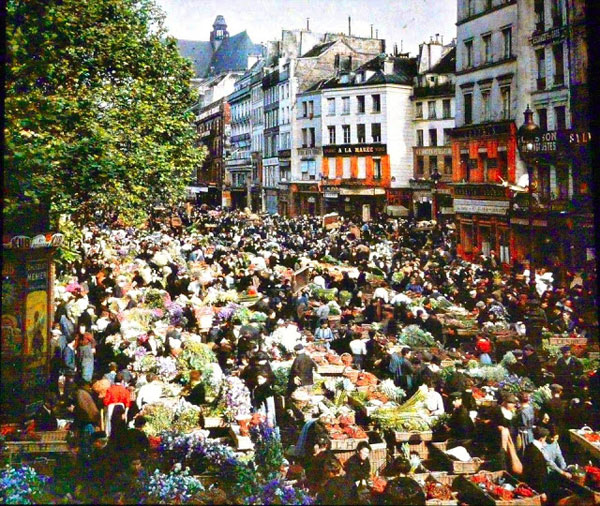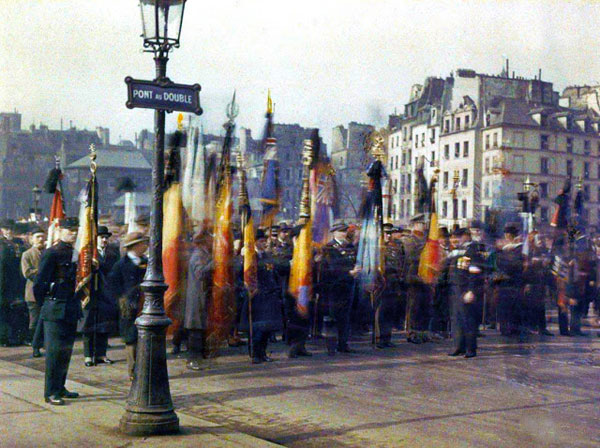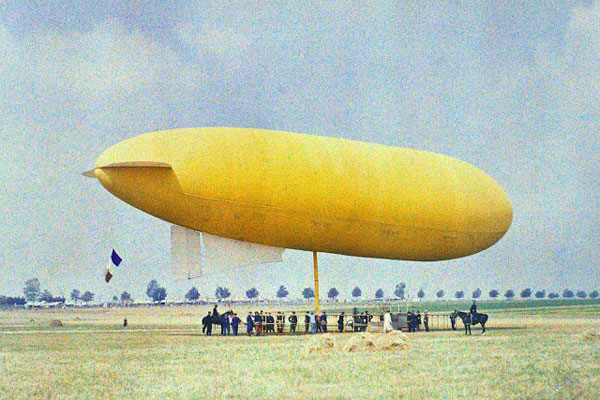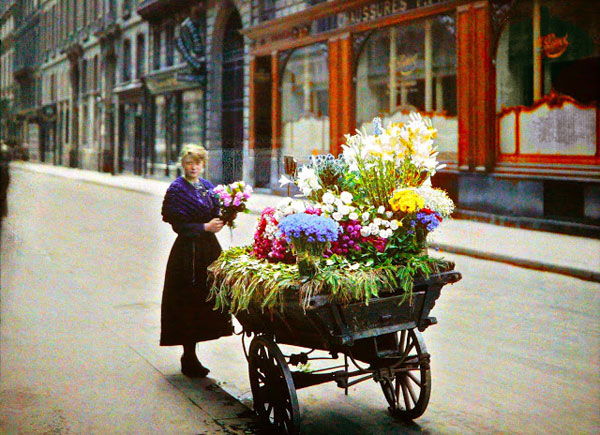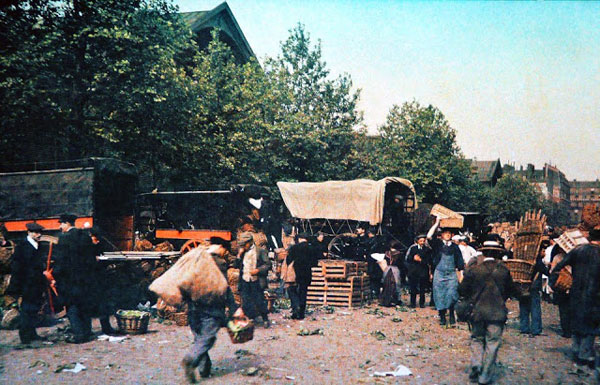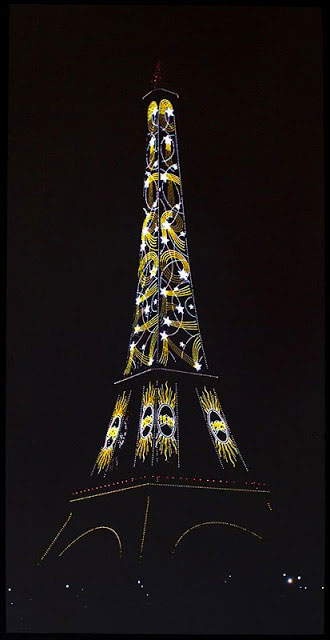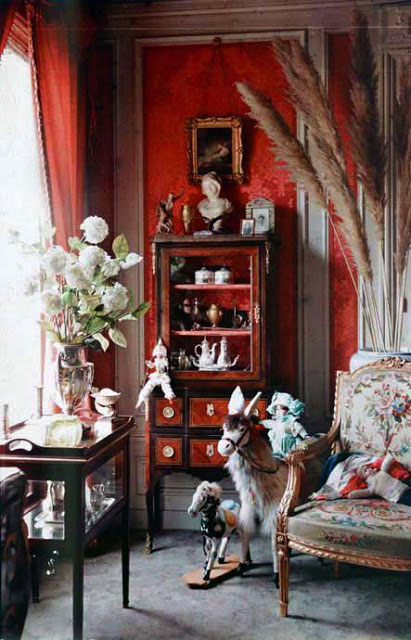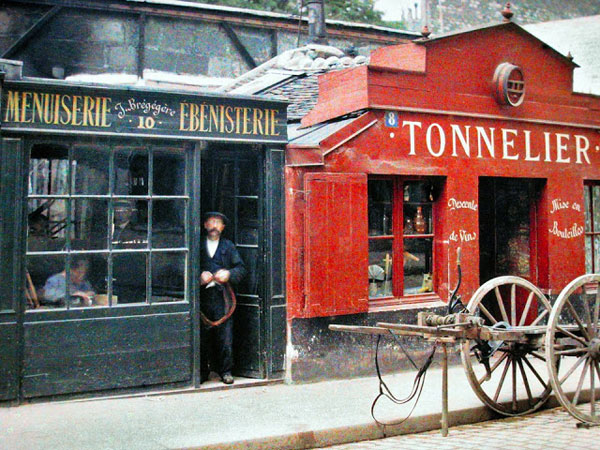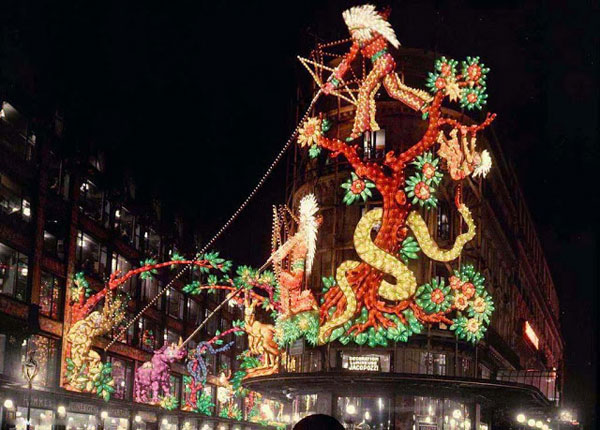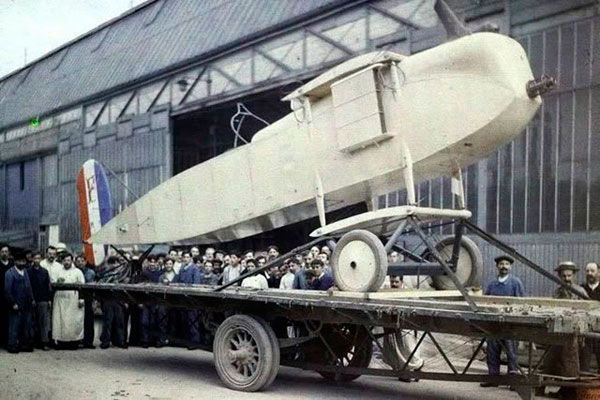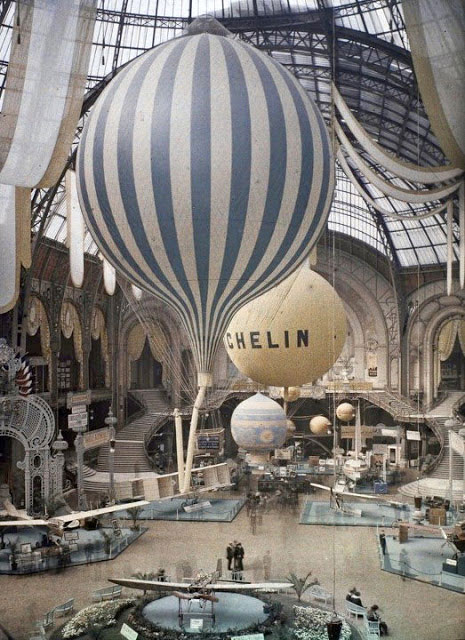Paris Mon Amour: More early 20th-century color photos of the city of light and love
posted Thursday, January 31, 2013 at 10:23 AM EST
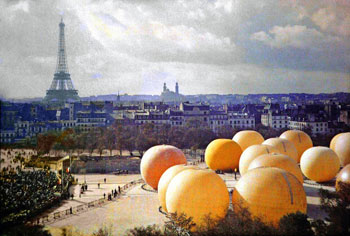
A month or so ago, IR's Dan Havlik reported on 10 early color photographs of Paris and, to all our surprise, it turns out there are more: a total of 85 in all at the “Paris 1914” website.
These are more softly colored Autochrome images that remind me of the first time I saw Paris. It was through the scratched window of a jet as it began to steeply bank on its landing approach to Charles de Gaulle Airport. It was early morning and the sunlight diffused by the moisture in the air made the city look like an impressionist painting. I fell in love with Paris at that initial glimpse.
But then Paris has always been the photographer’s city and, from the beginning of photography, it has beguiled and seduced us.
The earliest photographic studios were here and Parisian photographers were among the first to explore the medium’s potential. For example, they took the first travel photographs and brought them back to exhibit in the city.
One crazy Parisian photographer, who used the name Nadar, took his wooden Daguerreotype camera up in a hot air balloon to make the first aerial photographs. Below him in the streets, one of his ground crew holding the balloon’s lines was a drinking pal named Gustave Flaubert.
A photographer's model
Paris has always been a photographer’s model and a very coy one at that. She reveals her true self slowly and only in tiny bits. The photographer Eugene Atget made some 10,000 images of her, yet he would still say that although he knew everything about Paris, he knew nothing at all.
The city has caught others in her spell: Henri Cartier-Bresson, Robert Doisneau, and the wild-eyed Brassaï, who ceaselessly roamed the night, photographing the city’s darker side; its smoke-filled bars and barely legal nightclubs.
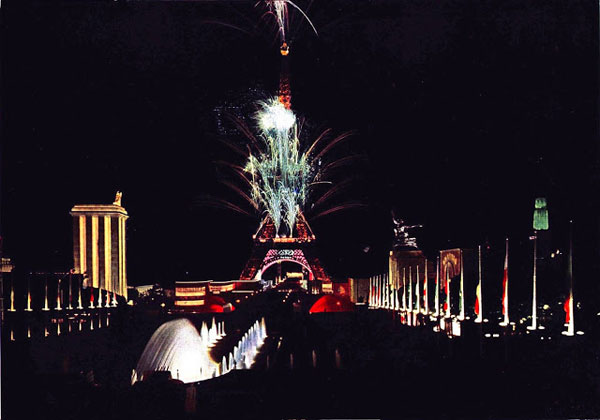
These early color photos of Paris were made using the Autochrome Lumière Process invented by the Lumière brothers in 1903, and first sold in 1907. It is a mosaic screen plate process in which a solution of microscopic grains of dyed potato starch is coated on a glass plate.
Like the modern RGB, the dyed starch recorded the colors in the scene. Autochrome Lumière remained popular right up to the start of World War II. The brothers Lumière, however, made their name for being among the earliest cinematographers. Even if you don’t recognize their names, stuck somewhere in your mind is their iconic image of a chubby faced man in the moon wincing in pain from a rocket ship that has landed in his eye.
Not just from 1914
Although these early color photos are labeled “Paris 1914” on the website, they were not all made in 1914. In fact, they cover nearly three decades of the city’s existence. For example, amongst the earliest is a photo of huge hot air balloons in an exhibition hall. This was during the 1909 Paris Air Show. Another photo shows the Eiffel Tower and Trocadero Gardens lit up by a large fireworks display. This was actually the opening night of the 1937 International Exposition of Modern Industrial and Decorative Arts.
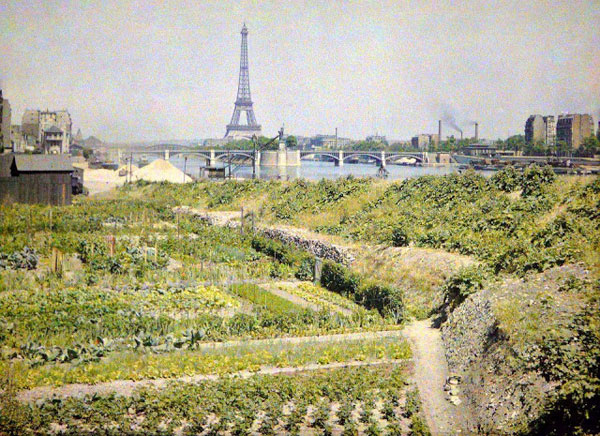
No matter exactly when they were taken, these images are happily nostalgic and evocative of a world long gone. I recognize some of these places from my own wandering around Paris as a photographic flâneur, but many sites no longer exist.
Beyond my own Parisian experiences, these images have another special meaning for me. In the 1910s, my grandfather worked as a waiter in Paris. He had left Eastern Europe without any money and camped out with my great Uncle in a Left Bank garret. He saved his meager salary and tips and, when he had enough, he set out on foot to Le Havre where he boarded a boat headed for America.
These photographs are for me a color window into that world of my grandfather in Paris.
